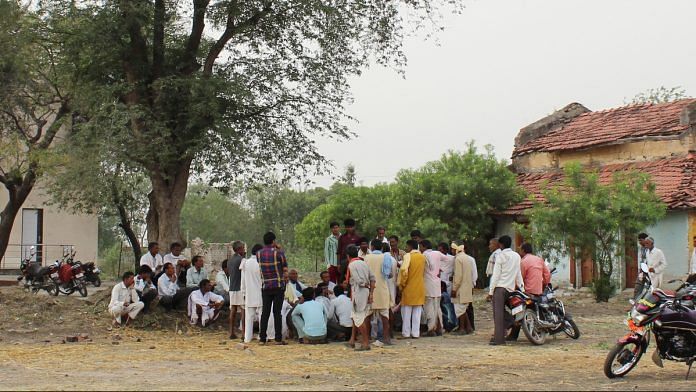The coat of arms of the Royal Institute of Chartered Surveyors proudly displays the Latin phrase as its motto — Est Modus In Rebus, which roughly translates as ‘There is a proper measure in things’ or ‘Measuring things properly is imperative’. In other words, whatever is significant is to be measured and what is not measured is not of relevance.
Two developments in the last few weeks lend credence to this statement. The first relates to the establishment of the National Land Monetisation Corporation (NLMC) as a fully-owned government company to document the surplus land and assets of Central Public Sector Enterprises (CPSEs) and other government agencies (railways, ports and defence establishments). The second relates to the SVAMITVA (Survey of Villages Abadi and Mapping with Improvised Technology in Village Areas) scheme, an initiative of the Department of Panchayati Raj. While the Cabinet decision of 9 March regarding the NLMC made frontpage news in most leading newspapers and received editorial applause in business bulletins, there was little mention of the notification of the DPR appointing Brij K. Agarwal, former chief secretary of Himachal Pradesh and India’s foremost expert on land matters as well as Lt. Gen (Retd.) Girish Kumar, former Surveyor General of India to expedite work on the SVAMITVA scheme. Significantly, the acronym means ‘ownership’ in Hindi.
Like the NLMC, SVAMITVA is also about assessing land values, making land transactions transparent, and unlocking the potential of land-based assets. In many ways, it is more ambitious and far-reaching, for it aims to map the ‘abadi’ (residential) areas of the 6.2 lakh villages of the country where 68 per cent of India’s population lives without any clear land titles or Record of Rights also called ‘jamabandi’. This may strike the readers as odd, but the fact of the matter is that the focus of revenue departments in Indian states was on surveying agricultural lands and creating an RoR for lands under the plough. The erstwhile Indian Civil Service, the Indian Administrative Service officers and state civil servants spent a fair amount of time learning how to measure and ‘settle’ agricultural land, but ‘homestead land’ village commons and pastures were not measured as they were not ‘revenue’-yielding.
Also read: Let farmers lease land like people rent houses – Land laws are holding India back
Better steps forward
As such, the decision of the DPR to ‘measure’ all inhabited land parcels in rural India is indeed momentous as well as far-reaching with positive long-term outcomes. What is more, unlike the error-prone, time-consuming traditional survey techniques, the DPR has decided to adopt drone technology with Continuously Operating Reference Station (CORS). CORS has the ability to accurately survey large areas almost instantaneously and provide high-resolution maps, which are editable as well as geo-tagged. This provides a clear demarcation of land holdings without any measurement errors and helps in the creation of an authentic record of property holdings, especially where the only recourse to establishing a claim was actual possession and an anecdotal verification by those living in the vicinity.
CORS is expected to benefit over 13.13 crore village household heads in Gram Panchayat (GP) areas. The beneficiaries will be able to download the Aadhaar-authenticated property card on their mobile phones through the ‘digilocker’ application. Alternately, they could visit the GP office or a common service centre. This will also make it easy to identify the kind of habitation – pucca or otherwise — as well as an independent verification of toilet construction.
But yes, even as they receive a property card, which will be a mortgageable document, there is a flip side to it. They also become liable to pay property tax, which would be calculated automatically based on current valuations. Whether or not this is a precursor to tax on agricultural incomes above a certain threshold will depend on how effective the property tax realisation is. However, this would certainly ensure that the panchayats get a permanent revenue source and not be fully dependent on the state finance commissions for the devotion of funds.
SVAMITVA will also ensure that survey infrastructure and GIS maps can be used by any other department or public agency for their use at a nominal fee to the GP. This will also reduce litigation on property matters and ‘wills’ have a descriptor on which inheritance can be based.
Also read: I’m making public the Supreme Court panel report on farm laws. India needs to know the truth
Gram Panchayat Development Plan
For the Gram Panchayats, it is a win-win situation. The 73rd amendment to the Constitution passed in 1992 had mandated that 29 subjects – ranging from agriculture extension to vocational training – should be transferred to the panchayats, and each GP was to create a Gram Panchayat Development Plan (GPDP) after wide consultation with all the stakeholders. Now, SVAMITVA has provided complete access to empirical information regarding water bodies, topographic alignment, pastures, and village commons in addition to land under homestead.
As of now, 28 states and Union territories have signed a memorandum of understanding (MoU) with the Survey of India for the implementation of the SVAMITVA scheme. This will empower the ‘owners’ to have access to institutional credit, especially artisans and self-employed entrepreneurs who did not own agricultural land. Another positive externality will be the establishment of nearly 600 CORS networks as public infrastructure over the course of the scheme. Not only will this facilitate geo-positioning services and other developmental activities, but drones will become ubiquitous across the hinterland with all the concomitant benefits.
Sanjeev Chopra is a historian and Festival Director of Valley of Words. Till recently, he was the Director of the Lal Bahadur Shastri National Academy of Administration. He tweets @ChopraSanjeev. Views are personal.
This article is part of ‘State of the State‘ series that analyses policy, civil services, and governance in India.
(Edited by Humra Laeeq)



